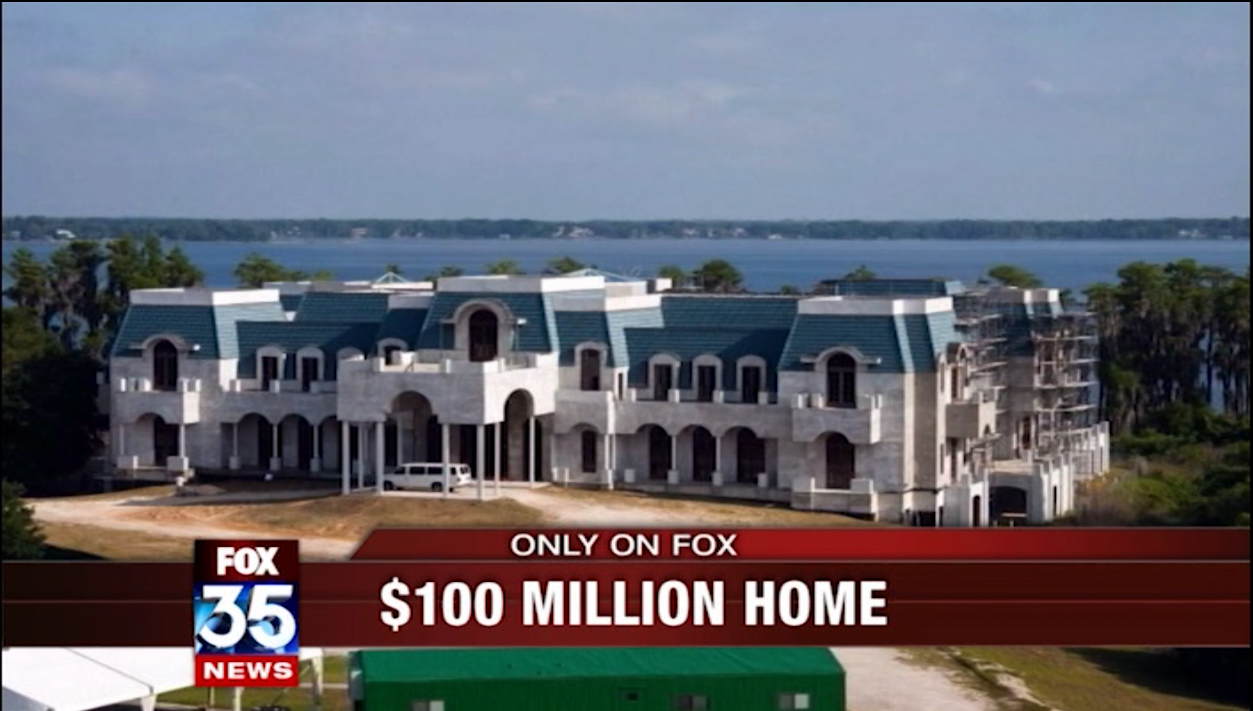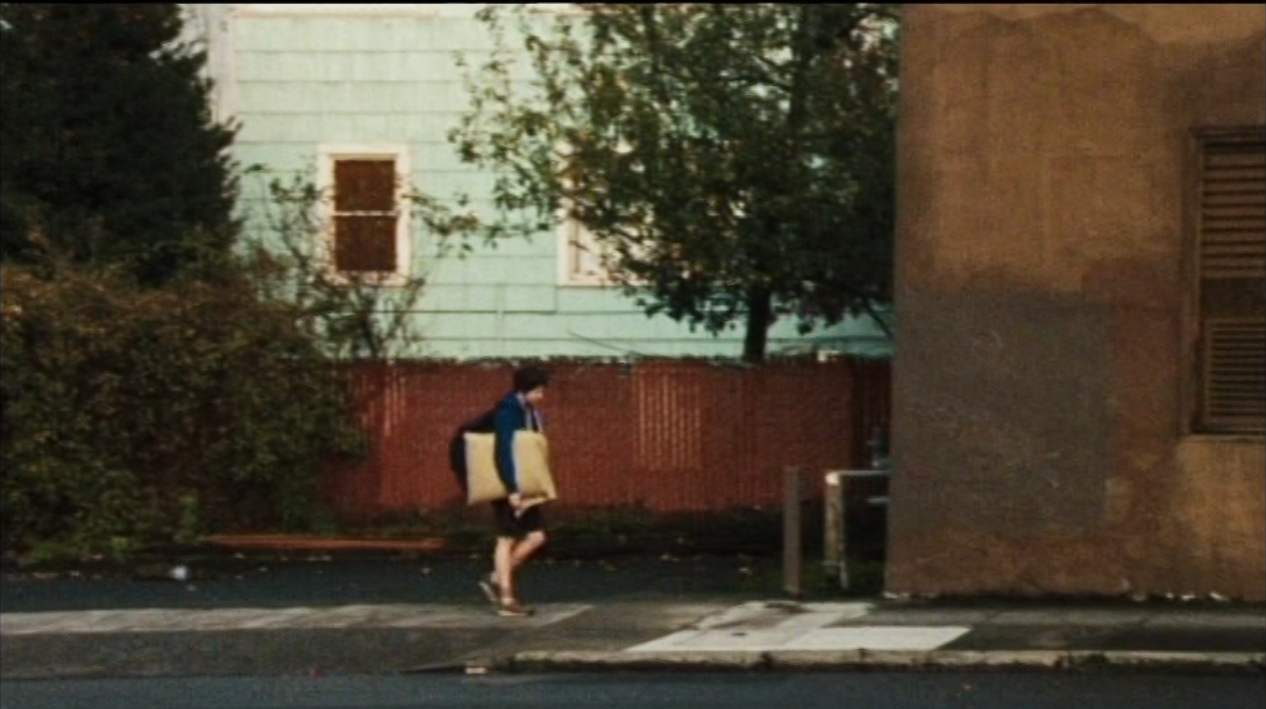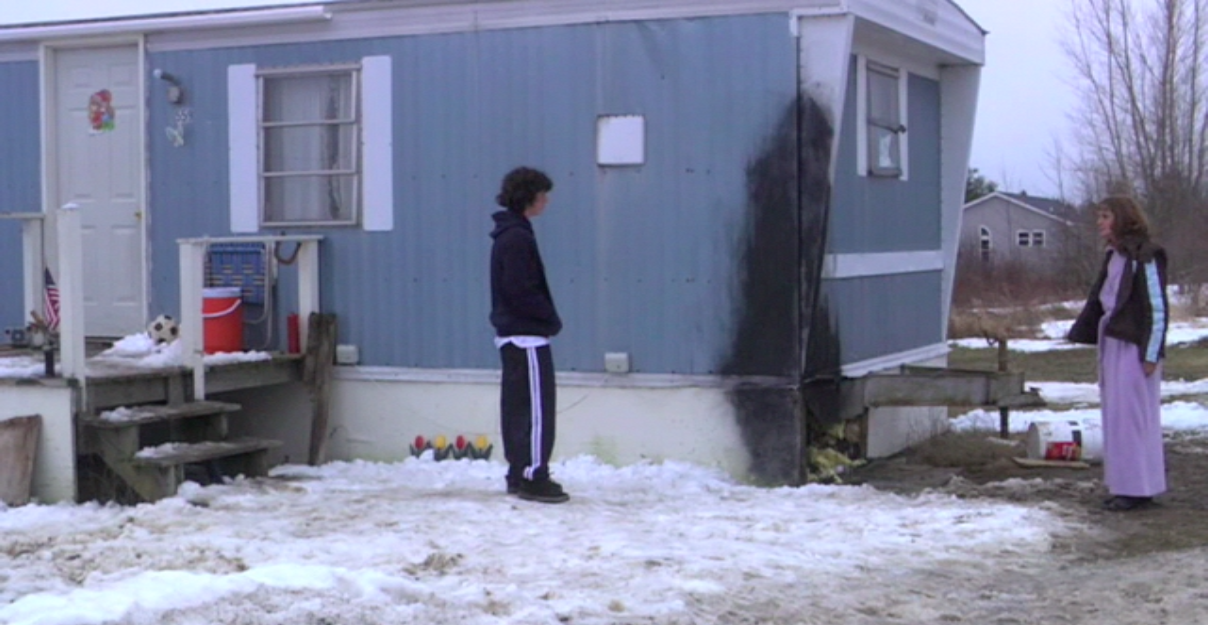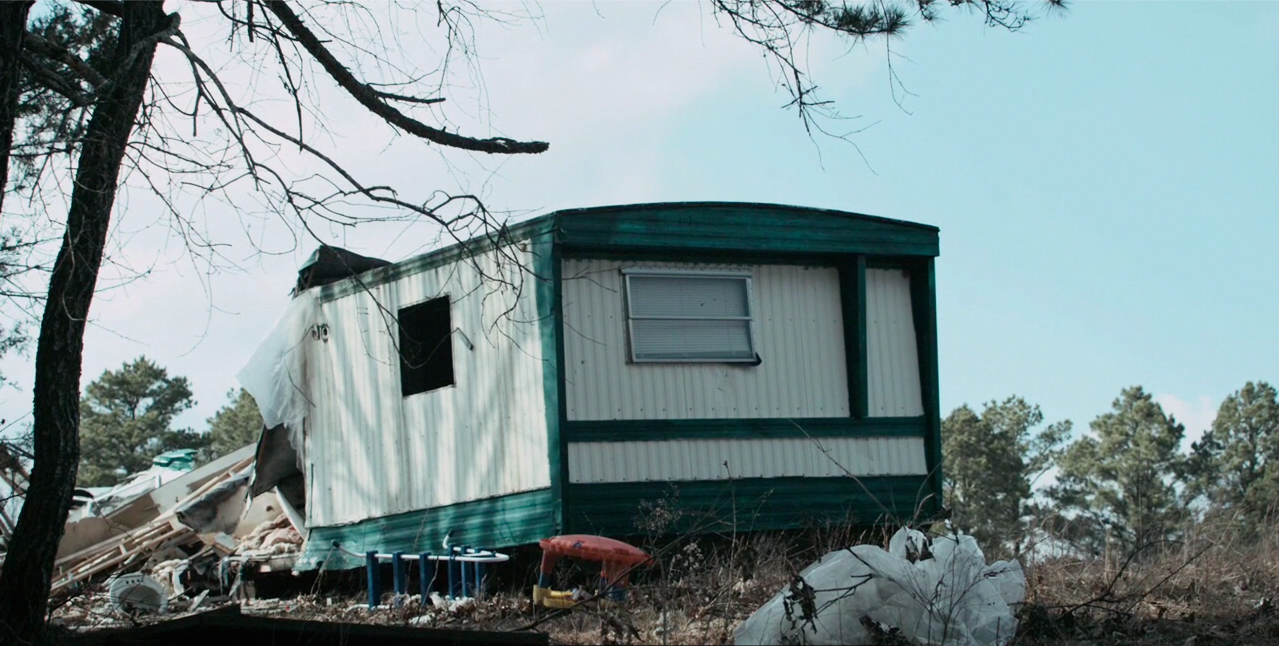Precarious Dreams: The Housing Crisis and US Cinema
Richard Martin / Independent Scholar

In 1995, the ‘National Homeownership Strategy’ was published by the US Department of Housing and Urban Development.1 The report called for the removal of regulatory barriers regarding home financing for low-income borrowers, while its list of “partners in the American Dream” included the likes of Fannie Mae and Freddie Mac. Such an optimistic promotion of homeownership now feels like a cruel irony. Indeed, the report was crucial in setting the legislative framework and political climate for the subprime mortgage crisis which sparked the broader 2008 financial crisis.
How has contemporary US cinema approached “the American Dream” of homeownership? Considering this question, we might instinctively think of The Queen of Versailles (dir. Lauren Greenfield, 2012) – a documentary about David Siegel, owner of the world’s largest timeshare business, as he and his wife attempt to build the biggest home in America. Their plans for a $100m Florida mansion, complete with 13 bedrooms and 30 bathrooms, were abruptly derailed by the financial crisis. Greenfield’s film is about the excesses of the 1% and the people who have to literally clean up after them. It’s a film, we might say, about a dangerous identification with the American Dream.
Yet, other recent American films cast a rather different light on the present housing crisis. Wendy and Lucy (dir. Kelly Reichardt, 2008), Frozen River (dir. Courtney Hunt, 2008) and Winter’s Bone (dir. Debra Granik, 2010) all highlight the struggle to sustain even the most basic level of domestic security – both before and after the crash. These are films about the threat of losing your home, about the obstacles faced and the debts incurred in trying to become a partner in the American Dream. There are no mansions here – just spaces of neglect and poverty. The films are concerned with precarious lives lived in precarious spaces on the urban edge or in rural isolation, not in America’s metropolitan centres. Home remains the central object of desire, as characters face sleeping in a car, in the woods or in a damaged trailer.
In framing these films, it is useful to borrow an evocative term developed by the theorist Lauren Berlant: “cruel optimism.” Berlant is interested in why people “stay attached to conventional good-life fantasies […] when the evidence of their instability, fragility, and dear cost abounds.” She defines cruel optimism as “the condition of maintaining an attachment to a significantly problematic object” – desiring something that is “actually an obstacle to your flourishing.”2
Similarly, in the films of Reichardt, Hunt and Granik, characters frequently repeat many conventional American good-life fantasies – the promise of moving West to find prosperity, the importance of family, the value of military service, the security provided by violence – before the dear cost of these attachments are revealed. Above all, the desire for homeownership in these films feels like cruel optimism.

Take, for instance, Wendy and Lucy. Stranded on the edge of Portland, Oregon, Wendy (Michelle Williams) finds herself homeless in an alienating landscape of gas stations, garbage containers and big-box stores – spaces rarely seen on film. On the one hand, this feels like distinctly uncinematic territory. On the other, Reichardt’s work, like that of Granik and Hunt, has been noted for its nods to Italian neo-realism. Contemporary US directors have, in examining today’s precarious lives, turned to a cinematic tradition shaped by European experiences of Fascism and war. Wendy and Lucy is also an anti-road movie, a film about stasis and breakdown – both literally, in that Wendy’s car gives up the fight, but also in terms of social, economic and personal collapse. To be without movement in the exurbs is to occupy inhospitable spaces.
Reichardt herself described Wendy and Lucy as a response to a new-found cruelty she senses in American political discourse. “It’s just the disdain for poverty,” she explained, “and that assumption that opportunity is lying at our feet, all we have to do is bend over and pick it up.”3 In focusing with generosity on Wendy’s battle to cope with poverty and the disdain it generates, while simultaneously dreaming of a brighter future, Reichardt aligns herself with Berlant’s interest in the composure and self-management demanded by a state of cruel optimism.

The need for survival provokes more extreme measures in Frozen River. Set amongst highways, casinos and trailer parks on the border of New York and Quebec, the film focuses on Ray Eddy (Melissa Leo), a middle-aged mother of two who turns to people-smuggling to finance a new trailer for her family. In Frozen River, home can be delivered to you on the back of a lorry, via a company owned by a man called Guy Versailles, whose motto is “Live the Dream.” Other businesses thrive in this landscape, too: a debt collection agency is constantly harassing Ray, demanding payments for household appliances bought on credit. Further debts are incurred: the illegal immigrants Ray helps to smuggle into the US face years of hard labour to pay off the costs of getting there.
Debt – in both financial and familial terms – is at the heart of Winter’s Bone, a study of rural poverty in Missouri. The anthropologist David Graeber concluded his recent history of debt by asking, “What is a debt, anyway? A debt is just a perversion of a promise. It is a promise corrupted by both math and violence.”4 The encouragement of debt in documents like the ‘National Homeownership Strategy’ has prompted moral confusion and human suffering when the debts proved mathematically insurmountable. In 22% of America’s home mortgages, the debt now exceeds the value of the house – another perversion of a promise and another case of cruel optimism.5

In Winter’s Bone, 17-year-old Ree Dolly (Jennifer Lawrence) must save her family home from repossession after her father offered the house as a bail bond and then disappeared before his trial. Ree is another woman struggling on her own in an apocalyptic landscape of shack housing, abandoned cars and burnt-out meth labs.6 Her faith that local family members will help her is perverted, even though, as she says, shared blood is “supposed to mean something.” This a world both claustrophobically incestuous – everyone knows everyone – and yet also daunting and epic. The violence involved in sustaining a system of debts and bonds lurks in every corner of the screen.
Finally, what it does mean to study the housing crisis through cinema, a medium commonly perceived to be in crisis itself? Wendy and Lucy, Frozen River and Winter’s Bone – made for a combined total of less than $3.5m – are the antithesis of the CGI-dominated, blockbuster franchises that constitute much of Hollywood’s output. The spaces of domestic poverty in the independent films discussed here contrast sharply with the ever-more expensive images, often of global locations, created by major studios. While one showcases a spectacle of capital, the other emphasises the spaces capital has neglected or destroyed.
In discussing Wendy and Lucy, Reichardt has admitted, “the financial restraints that we had making the film pretty much mirrors what Wendy’s going through. It wasn’t a super uplifting experience.”7 A lack of options, constant financial pressure, precarious living, coping with temporary structures – there are clear links between these filmmakers and their characters. Indeed, at $300,000, Wendy and Lucy cost about the same as the average US home – before the crash. Valued at $100m, the home we see in The Queen of Versailles equates to a Hollywood blockbuster. Given the increasing inequality at work here, can we maintain even a cruel optimism in the conventional good-life fantasies of cinema itself – so long a partner in our collective dreams?8
Image Credits:
1. The Queen of Versailles (2012)
2. Wendy and Lucy (2008)
3. Frozen River (2008)
4. Winter’s Bone (2010)
Please feel free to comment.
- US Department of Housing and Urban Development, “The National Homeownership Strategy: Partners in the American Dream” (May 1995). http://confoundedinterest.files.wordpress.com/2013/01/nhsdream2.pdf [↩]
- Lauren Berlant, Cruel Optimism (Durham: Duke University Press, 2011), p. 2; p. 24; p. 2. [↩]
- Zachary Wigon, “A Completely False Security: An Interview with Kelly Reichardt,” Notebook, 12 December 2008. http://mubi.com/notebook/posts/a-completely-false-security-an-interview-with-kelly-reichardt [↩]
- David Graeber, Debt: The First 5,000 Years (New York: Melville House, 2012), p. 391. [↩]
- Robert Kuttner, “The Debt We Shouldn’t Pay,” New York Review of Books, 9-22 May 2013. [↩]
- Though there’s insufficient space to discuss it in detail here, gender clearly plays a major role in all these films. For more on the relationship between gender and the current crisis, see the forthcoming collection, edited by Diane Negra and Yvonne Tasker, Gendering the Recession: Media and Culture in an Age of Austerity (Durham, NC: Duke University Press, 2014). [↩]
- Gus Van Sant, “Kelly Reichardt,” BOMB, No. 105 (Fall 2008). http://bombsite.com/issues/105/articles/3182 [↩]
- Thanks to Dietmar Meinel and Julia Leyda for their thoughts on the ideas discussed here. [↩]
Great post! I think this is a nice addition to the growing scholarship on precarity and its relationship with the media. Although I don’t think the economic crash of 2008 began this trend (I’d point to Beck and Giddens’ landmark work on risk society in the 1980s and 1990s), it does make for a nice marker in observing how film and other media represent the impoverished, homeless, and soon-to-be-homeless – those truly affected by precarious times – in the highly modernized arena of 21st century society. In an industry saturated by narratives of luxury and polish, we are reminded by movies such as Winter’s Bone, and I would include very recent titles like A Single Shot and Nebraska too, that for most, there is little hope for the future, or at least little hope for a future that includes them (the poor). In her recent book, Precarious Japan, Anne Allison describes Japan – with hints toward the U.S. and other countries suffering from the hyper-capitalist, neoliberal age – as a country plagued by “no future,” its impoverished and working class suffering not only economic uncertainty but an existential crisis marked but worthlessness and detachment, what Franco Berardi terms “the alienation of the soul” (Allison 15). She sees the issue, in Japan, not stemming directly from the risk of home-ownership but from an economy – much like the United States’ – increasingly reliant on non-union, impermanent, part-time, and migrant work. Home-ownership plays a specific role in relation to the troubles facing the “precariat” and carries with it heavy metaphorical baggage, especially in the U.S. Films such as The Queen of Versailles smartly contrast ideals of the “American Dream” with the current “American Reality” to highlight the twisted conception of “home” in late-capitalist America and the extravagance inherent in American Dream rhetoric. On the other side of the spectrum, standing opposite from Winter’s Bone and Frozen River, exist a new crop of social satires that depict the vacuousness of luxury and materialism. Just in 2013, Spring Breakers, The Bling Ring, and The Wolf of Wall Street (not to mention non-American films like The Great Beauty) come to mind, their depictions of pure materiality and uncensored, capital- and capital-culture-driven hedonism turned barbarism used to discuss precarity from a different vantage point. In these films, existential precarity – as in the suicidal overtones of Spring Breakers, or Jordan Belfort’s rocky slide toward self-destruction in The Wolf of Wall Street – supersedes economic desperation to disgrace any idea of the “American Dream” as a way out, or, more importantly, as a way forward. While a sprawling mansion and the rich “lifestyle” may still occupy Ree’s dreams at the end of Winter’s Bone, that dream is exploded in films like The Wolf of Wall Street, shown to be a form of moral and spiritual corruption from which recovery is nigh impossible.